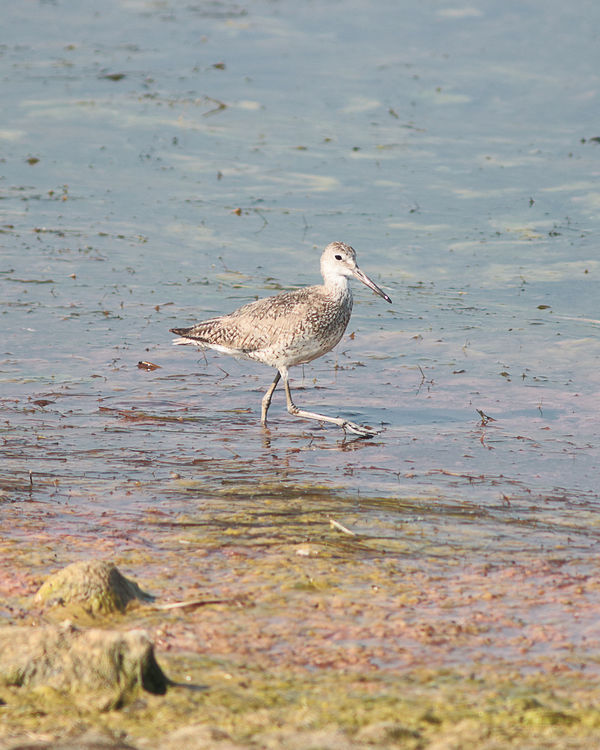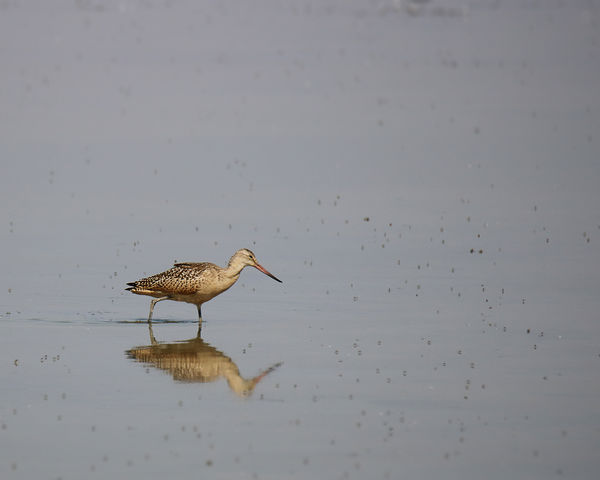A Strange Occurrence Happened - Has Anybody Ever Seen This
Oct 4, 2018 08:57:27 #
robertjerl wrote:
High temps, humidity, haze etc etc etc (and the us... (show quote)
I shoot old school too. For me a full day is likely only 80 digital exposures. The most I've ever shot in a day was 160. Like if I were a very busy view camera user! LOL

Oct 4, 2018 08:59:14 #
I have had similar problems occur when shooting over a large body of water on a sunny day but much cooler temperatures in Nova Scotia and Glacier Bay in Alaska. I shot what I thought were nice images using a 400 mm lens on a FF camera as well as very long focal lengths on a bridge camera and when viewing on my computer screen I was disappointed to so a lot of distortion and lack of good focus. I originally though I had a camera/lens problem but my wife’s images with her camera showed the same results. I determined that the water surface, although very cold, absorbed enough heat from the sun to produce heat wave distortion in the atmosphere over the surface of the ocean water. In both instances the weather was sunny and clear, breezy and no noticeable fog or haze. The results of my images looked like they had been PP using a distortion filter. None of those images were useable unless just making a 4x6 photo. I never had this problem before with long lens shots like birds over water but I attribute what I experienced to the temperate differential between the reflected heat waves from the cold water into the the cold air rendering the heat waves very prominent.
Just my observation......
Goober
Just my observation......
Goober
Oct 4, 2018 09:04:38 #
LittleRed wrote:
This past summer I and my wife spent a very enjoya... (show quote)
It is most likely a Hot Wet Air thing with long lens optics. Not just high temperature per se. External heat alone should not affect the electronics of the camera system. One day this past July it was 117 degrees in the L.A. suburban city where I live. Los Angeles was 113 that same day, yet Death Valley was only 112! I did not notice anything weird with my cameras. We and or dogs were just uncomfortable!
Oct 4, 2018 09:56:32 #
Humidity shouldn't be a problem at your locations, heat waves will effect long shots. I"ve been out all day in 100+ temps on a ATV with no problems.
Oct 4, 2018 10:35:08 #
DaveyDitzer
Loc: Western PA
any possibility of fogging inside the camera / lens systems? In my experience transitions from A/C in the car to warm humid conditions outside can produce fog for a remarkably long time (an hour or more in my case).
Oct 4, 2018 10:47:35 #
lsupremo
Loc: Palm Desert, CA
LittleRed wrote:
This past summer I and my wife spent a very enjoya... (show quote)
I live in Palm Desert, CA, we haven’t had a day under 100 degrees since last May, even at night.
Now I don’t know what to do!
Oct 4, 2018 10:53:37 #
Oct 4, 2018 12:50:34 #
amfoto1
Loc: San Jose, Calif. USA
I agree with many of the other posts... a lot of the problems was the atmospheric effects of heat and humidity.... especially since your examples are both shots of birds in water, where it would likely be even greater.
Both images can be greatly improved. I played around with them in Photoshop, too...
I think one key is to minimize cropping. In conditions like these, you need to get closer and "fill your viewfinder" as best possible. That's always a good policy, but especially when the atmosphere is working against you.
Aside from that, I used a fairly strong high pass filter for initial sharpening, then used a curves adjustment to boost contrast, then applied some unsharp mask. I got some edge artifacts on the 2nd image and retouched those out with a clone tool. I also actually added blur to the foreground and background of the 2nd image (which helps other portions of the image appear sharper).
Your whole story emphasizes the importance of checking one's images while on a trip, in order to know if you're having problems and be able to address them while you are still in the area.
Both images can be greatly improved. I played around with them in Photoshop, too...
I think one key is to minimize cropping. In conditions like these, you need to get closer and "fill your viewfinder" as best possible. That's always a good policy, but especially when the atmosphere is working against you.
Aside from that, I used a fairly strong high pass filter for initial sharpening, then used a curves adjustment to boost contrast, then applied some unsharp mask. I got some edge artifacts on the 2nd image and retouched those out with a clone tool. I also actually added blur to the foreground and background of the 2nd image (which helps other portions of the image appear sharper).
Your whole story emphasizes the importance of checking one's images while on a trip, in order to know if you're having problems and be able to address them while you are still in the area.
Oct 4, 2018 15:32:10 #
aubreybogle
Loc: Albuquerque, NM
robertjerl wrote:
High temps, humidity, haze etc etc etc (and the us... (show quote)
Thank you for this superb and informative critique. Many other readers in addition to OP will benefit from your accurate and concise analysis. This is what this site is all about.
Oct 4, 2018 17:37:04 #
SonyA580 wrote:
The data for #1 says focus of 35' to infinity; #2 says 268' to 1857'. The distances for #1 sound reasonable but #2 is questionable. Looks like something is messin' with your focus. I don't have a clue what could do that except I sometimes use the AF Lock and forget to toggle it off.
#1 was shot at approx. 50' while #2 was at approx. 250' (measurements taken on Google maps)
LittleRed (Ron)
Oct 4, 2018 17:42:31 #
Capn_Dave wrote:
That is strange I live and shoot in Florida. In the summer the humidity hit 99% all the time and it is not raining. If there is haze I can see it in the distance
I never have this problem if the subject is within 100 yards. Now it I am trying to shoot way out there, yes it is a problem. Lightroom's haze filter works
quite well and will salvage them.
I never have this problem if the subject is within 100 yards. Now it I am trying to shoot way out there, yes it is a problem. Lightroom's haze filter works
quite well and will salvage them.
Thanks Capn, this is what I was looking for. Makes me wonder if it is not just a minor glitch with my Canon.
LittleRed (Ron)
Oct 4, 2018 17:45:12 #
lamiaceae wrote:
I shoot old school too. For me a full day is likely only 80 digital exposures. The most I've ever shot in a day was 160. Like if I were a very busy view camera user! LOL 

Good Gosh, a lot of the times I can take 80 in 10 minutes, especially a an active wildlife refuge.
LittleRed (Ron)
Oct 4, 2018 17:47:00 #
jerryc41 wrote:
I agree with the "weathermen."
A suggestion: make your posts shorter and have more paragraphs.
A suggestion: make your posts shorter and have more paragraphs.
Yes Jerry, I do have a problem of not shutting up at times. At least thats what my wife says!!!!!
LittleRed (Ron)
Oct 4, 2018 17:50:22 #
Goober wrote:
I have had similar problems occur when shooting ov... (show quote)
hh
Good thought Goober. Most my problem shots were over or near water. But even on some shots over land I had the same occurrance.
LittleRed (Ron)
Oct 4, 2018 17:53:07 #
Bultaco wrote:
Humidity shouldn't be a problem at your locations, heat waves will effect long shots. I"ve been out all day in 100+ temps on a ATV with no problems.
Thanks, an answer I was looking for. Dont know what you mean by long shots but most of the ones I made were at least 300' or less. I knew that real long shots in those conditions would be a no-no.
LittleRed (Ron)
If you want to reply, then register here. Registration is free and your account is created instantly, so you can post right away.





